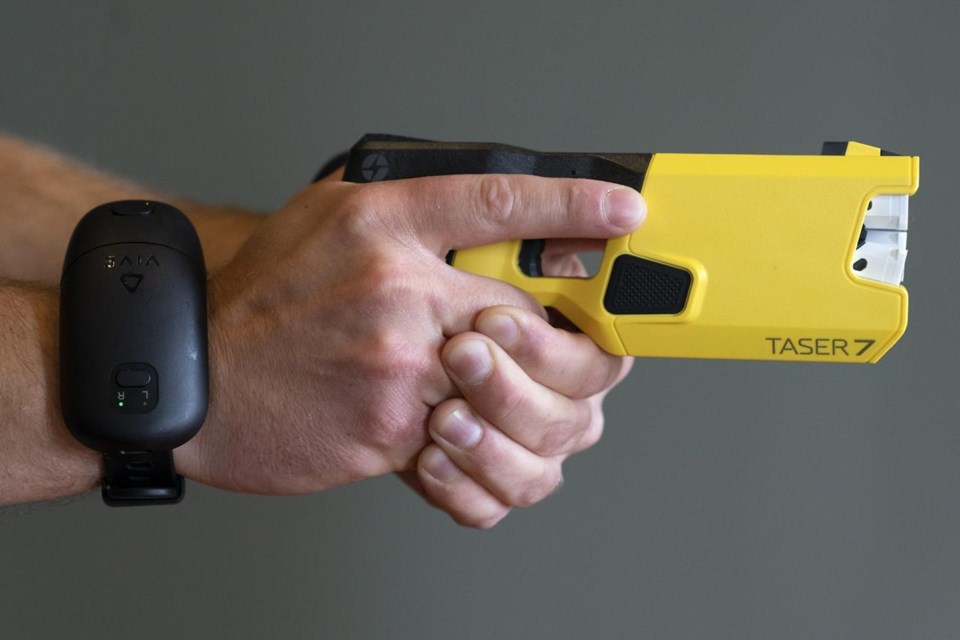VICTORIA — British Columbia has approved the use of an updated Taser weapon for officers around the province to use as a less-lethal weapon during police confrontations.
A statement from the Ministry of Public Safety says the Taser 7 offers the ability to discharge a second shot without reloading a new cartridge and its short-distance shooting range option, among other "enhancements."
The ministry says the new Taser was approved by the director of police services after getting advice from a panel that includes police, the Independent Investigations Office and the British Columbia Schizophrenia Society.
It says a nine-month field trial last year involved officers from the Vancouver, Victoria and Port Moody police departments and found that the model was "effective, and no serious injuries or deaths among subjects, officers or bystanders were reported."
The statement says the panel has recommended several conditions to ensure all police agencies in B.C. update their training programs and adjust their internal policies and procedures to align with provincial standards on conducted energy weapons like Tasers.
Standards for conducted energy weapons were set out in B.C. in 2012, arising from the Braidwood Commission of inquiry into the death of Robert Dziekanski, who died in 2007 at Â鶹´«Ã½Ó³»airport after being jolted several times by a stun gun.
The government says the weapon is already authorized for use in Ontario, Quebec, Nova Scotia, New Brunswick, Saskatchewan and Alberta.
This report by The Canadian Press was first published March 25, 2024.
The Canadian Press



